The Three Pillars of Biophilic Design: Integrating Nature into Modern Spaces
As urbanization expands, the growing separation between humans and nature has led to a range of physical and mental health concerns. This increasing detachment has sparked the biophilic design movement, which integrates natural elements into modern environments to promote well-being, creativity, and productivity. Central to this design philosophy are three essential pillars: Nature in the Space, Natural Analogues, and Nature of the Space. These pillars represent different ways in which nature can be seamlessly incorporated into architecture and interior design, transforming built environments into spaces that help people reconnect with the natural world.
Analyzing The Three Pillars of Biophilic Design
1. Nature in the Space: Direct Presence of Nature
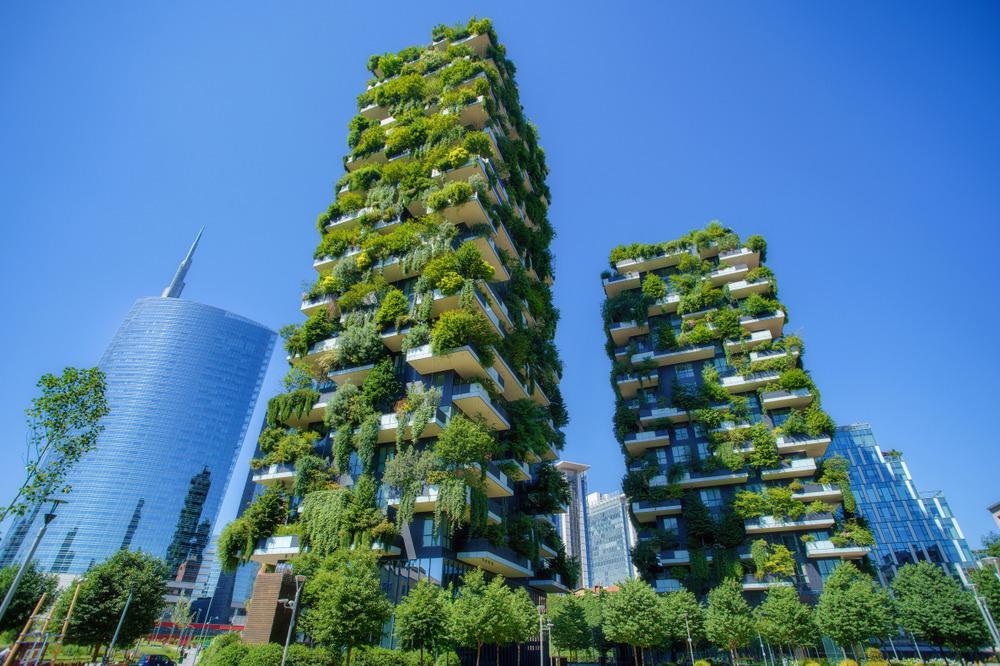
The first pillar of biophilic design, Nature in the Space, focuses on the direct inclusion of natural elements within the built environment. These elements range from living organisms, such as plants and animals, to natural features like water, light, and air. The primary aim of this pillar is to foster a direct sensory connection between occupants and the natural world, offering emotional, psychological, and physical benefits.
Visual Connections with Nature
A direct view of natural landscapes—such as trees, water bodies, or the open sky—plays a crucial role in promoting well-being. Research shows that office workers with views of greenery experience increased productivity, while patients in hospitals with access to nature tend to recover more quickly. Windows that frame lush courtyards, for example, can create calming, peaceful environments in residential, work, or healthcare settings.
Non-Visual Connections with Nature
Engaging other senses beyond sight can also enhance the connection to nature. Sounds like flowing water, tactile experiences such as the texture of natural stone or wood, or even the scent of fresh plants can add layers of interaction. This multisensory engagement fosters relaxation and tranquility, enriching the overall ambiance of a space.
Thermal and Airflow Variability
Rather than maintaining artificial, controlled environments, introducing natural airflow and temperature variations mimics outdoor experiences. Open-air spaces or rooms with operable windows that invite breezes create a more comfortable, healthy, and energizing atmosphere, contributing to overall well-being through natural ventilation.
The Presence of Water
Water features—like fountains, ponds, or even aquariums—are widely associated with improved concentration and relaxation. The soothing sound of water, coupled with its aesthetic appeal, fosters tranquility. Additionally, the presence of water contributes to better air quality by increasing humidity, making indoor spaces more comfortable and vibrant.
Dynamic and Diffuse Light
Natural light, with its changing intensities throughout the day, is vital for regulating circadian rhythms, which affect sleep, mood, and productivity. Spaces designed to allow sunlight to filter through at varying levels—through skylights, for instance—create a stimulating yet relaxing atmosphere that benefits both physical and mental health.
Connection with Natural Systems
Biophilic design also incorporates natural cycles into built spaces. Rooftop gardens, which change with the seasons, reflect the cyclical nature of the environment. These connections remind occupants of the broader natural world, fostering a sense of participation in ecological processes and promoting a deeper connection to the environment.
2. Natural Analogues: Indirect Connection to Nature
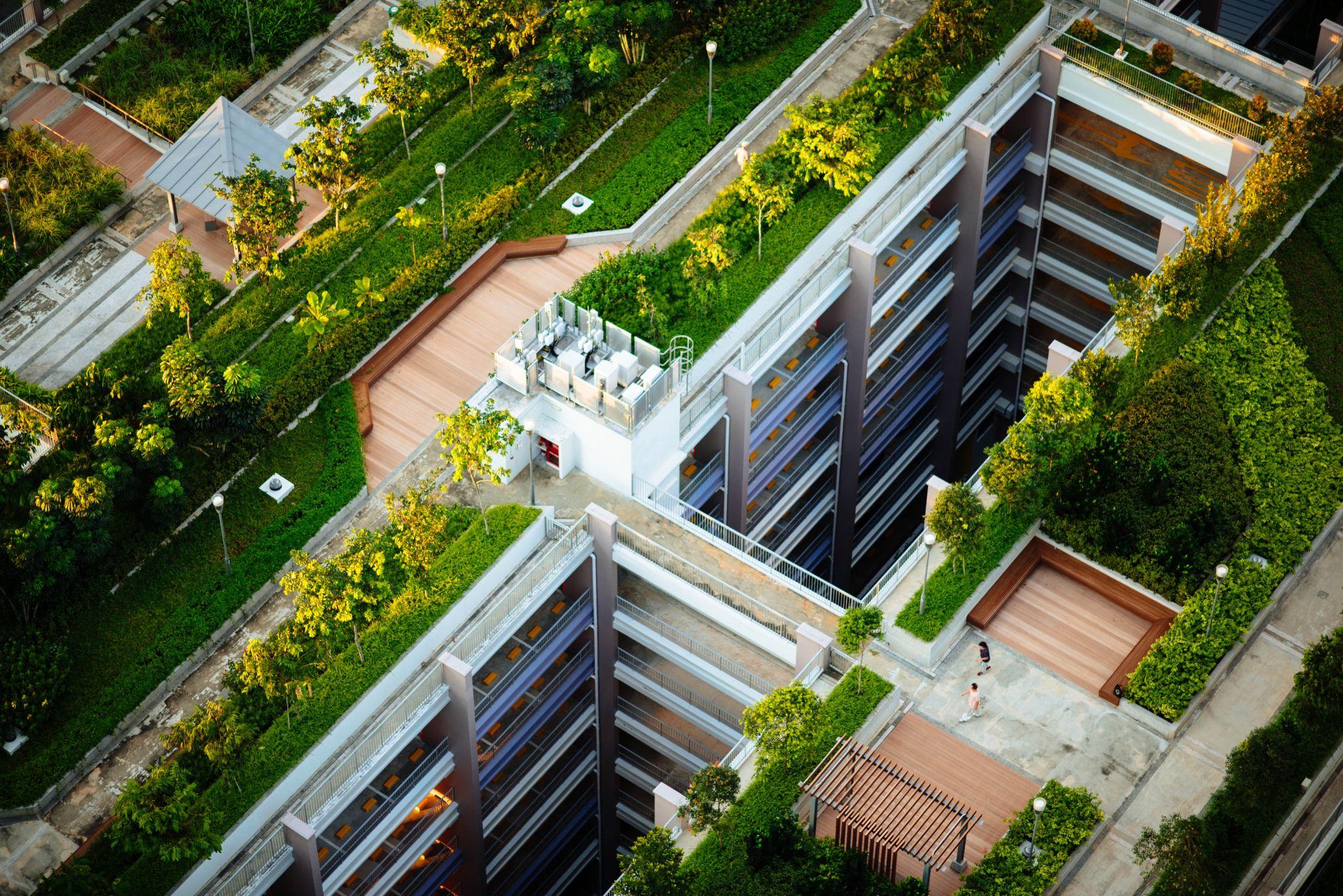
While Nature in the Space emphasizes direct interaction with nature, Natural Analogues refers to design elements that mimic or evoke natural forms, patterns, and textures without directly replicating them. This pillar taps into biomimicry, where designs are inspired by natural systems, creating environments that remind us of the natural world.
Biomorphic Forms and Patterns
The use of organic shapes—like the curves of a river, the spiral of a seashell, or the fractal patterns seen in leaves—helps to introduce a sense of harmony into spaces. These forms soften the rigidity of traditional geometric designs, creating more fluid and welcoming environments. For example, a building facade mimicking flowing water or interiors with leaf motifs can evoke a feeling of connection to nature, making the space feel more natural and balanced.
Material Connection with Nature
The textures and warmth of natural materials—such as wood, stone, or clay—provide a tangible link to the earth. Their imperfections and tactile qualities bring depth to a space, offering sensory experiences that synthetic materials cannot replicate. A wall clad in raw stone or wooden beams in a ceiling adds richness to a room, making occupants feel grounded and in tune with nature.
Complexity and Order
Natural systems are characterized by a balance of complexity and order. A forest, with its mix of trees, plants, and animals, may appear chaotic but operates as an organized ecosystem. This principle can be mirrored in design by incorporating diverse textures and patterns in a way that feels cohesive. Interiors that combine various materials—while maintaining a sense of unity—stimulate the senses without overwhelming them, offering both visual interest and comfort.
3. Nature of the Space: Spatial Experiences Inspired by Nature
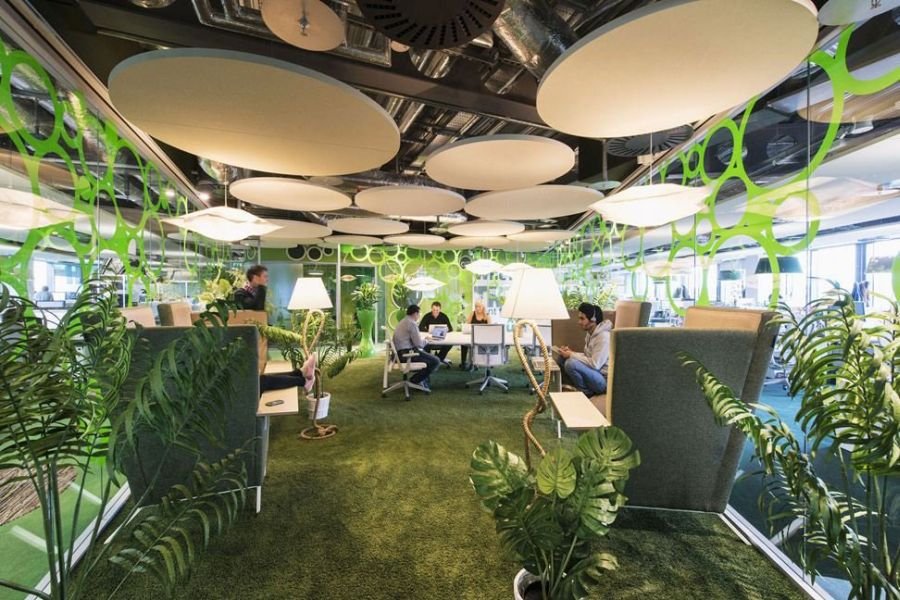
The third pillar, Nature of the Space, focuses on how people experience and interact with the built environment. Drawing inspiration from the ways humans explore and engage with nature, this pillar taps into our evolutionary instincts for exploration, safety, and mystery, transforming how we navigate spaces.
Prospect
Humans have an inherent need for expansive views, a trait rooted in our survival instincts. Open vistas, large windows, and open-plan layouts satisfy this desire, creating feelings of freedom and clarity. For instance, offices with floor-to-ceiling windows overlooking green landscapes offer mental clarity and reduce stress, enhancing well-being in the workplace.
Refuge
Complementing the desire for prospect is the need for refuge—spaces where individuals can feel protected and at ease. Cozy alcoves, secluded nooks, or enclosed seating areas within open spaces provide a sense of security. These smaller, intimate environments offer privacy and comfort, allowing occupants to relax and recharge.
Mystery
Humans are naturally drawn to environments that encourage curiosity and exploration. Design elements that obscure views, such as winding pathways or hallways that curve out of sight, create a sense of mystery. These spaces stimulate curiosity, inviting occupants to explore and engage with their surroundings in dynamic and engaging ways.
Risk/Peril
While not about actual danger, the concept of risk/peril adds excitement and novelty to spaces. Elements like suspended walkways or glass floors that offer the illusion of exposure create thrilling, memorable experiences. These features add a layer of excitement to a space, making it more interactive and exhilarating.
Conclusion
The three pillars of biophilic design—Nature in the Space, Natural Analogues, and Nature of the Space—work together to bring the benefits of nature into our built environments. By incorporating natural elements, patterns, and spatial experiences, we can create spaces that enhance well-being, creativity, and comfort. In an increasingly urbanized world, biophilic design offers a practical way to reconnect people with nature, leading to healthier and more inspiring places to live and work.
Image sources- tomorrow.city/biophilic-design, .azobuild.com, archdaily.com, billionbricks.org

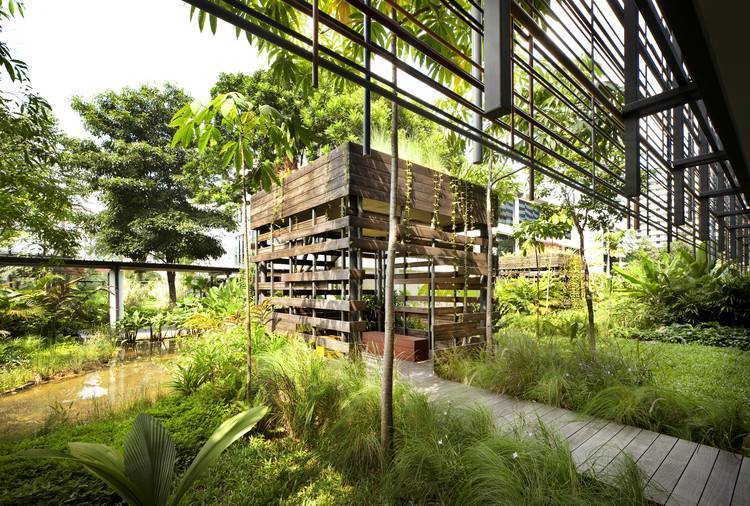
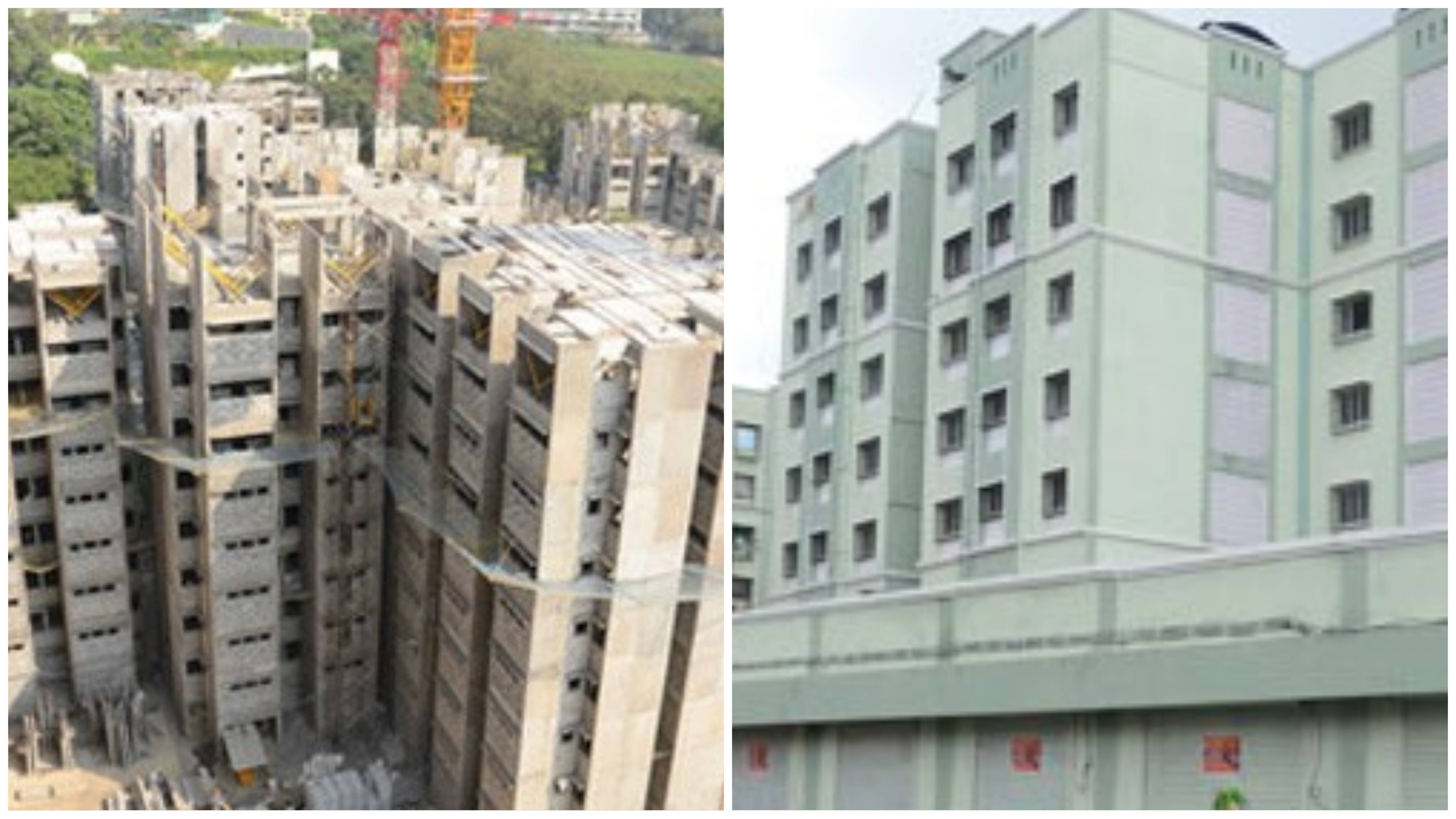



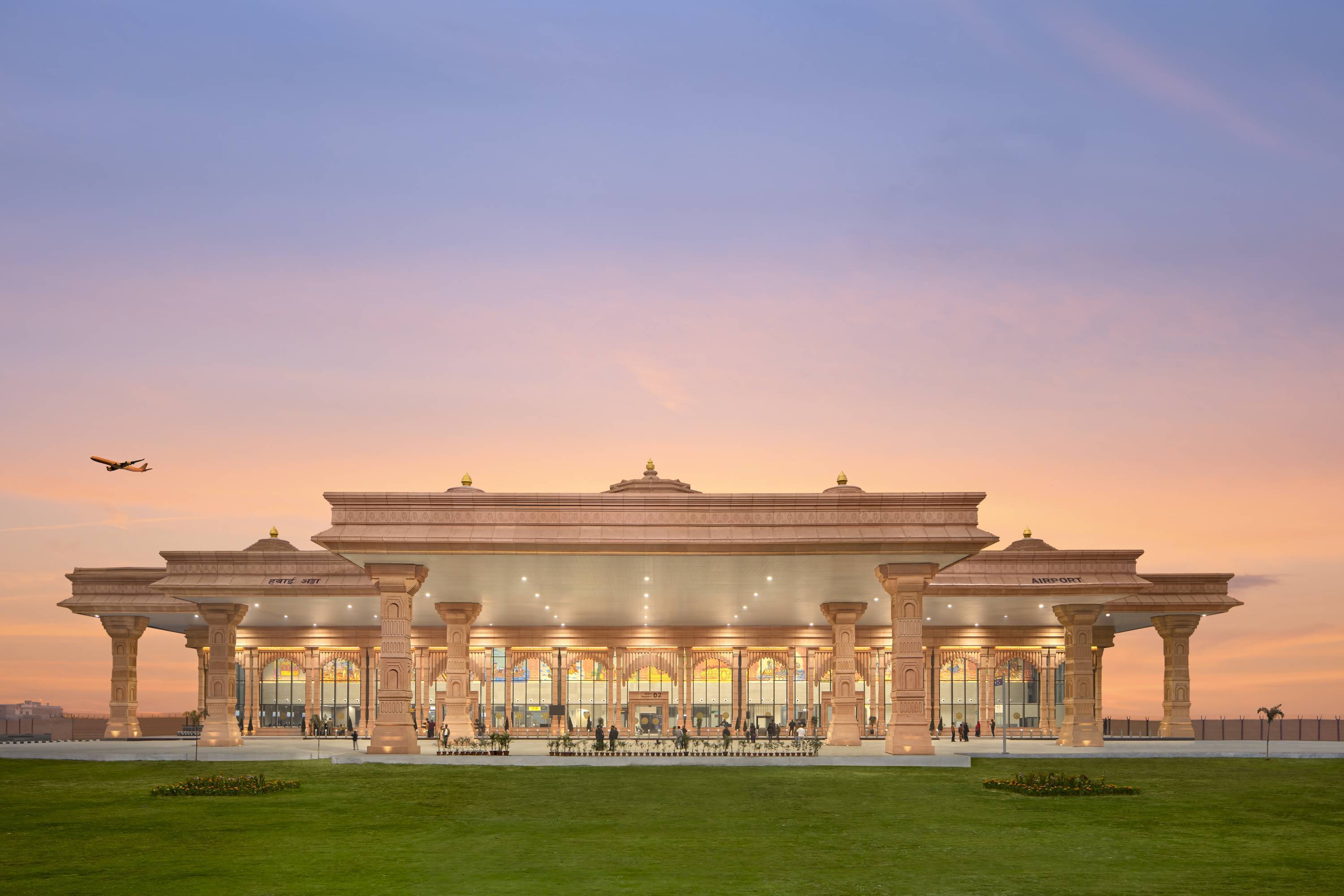

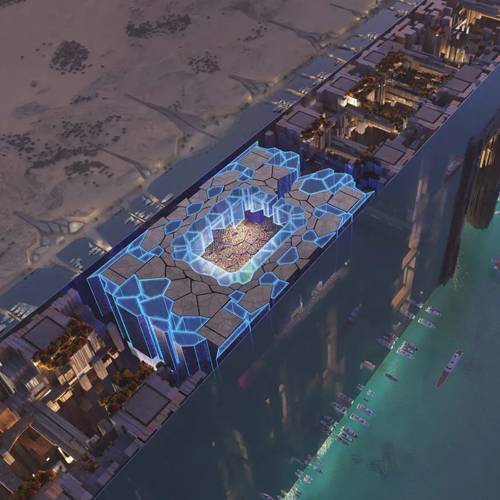
.png)